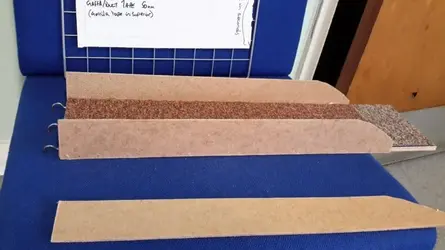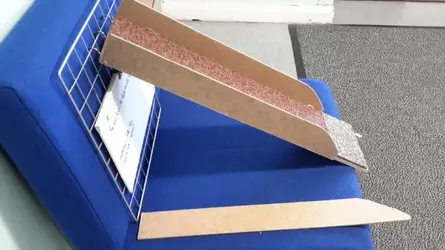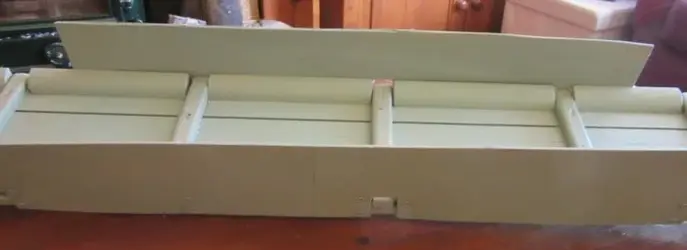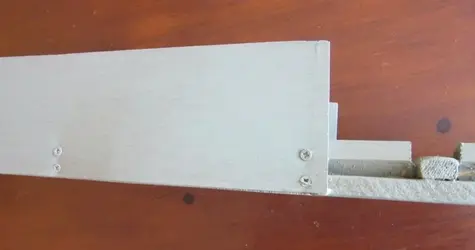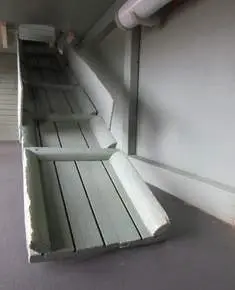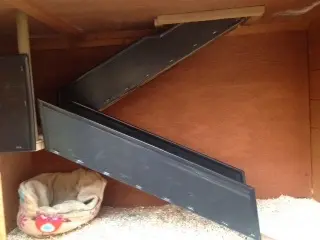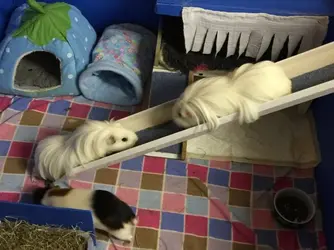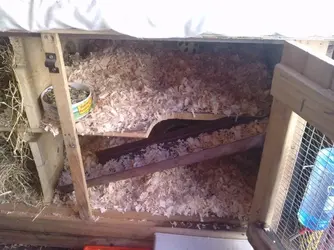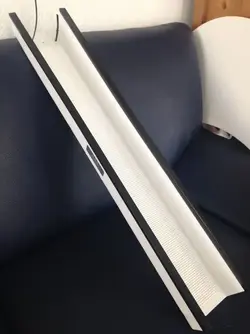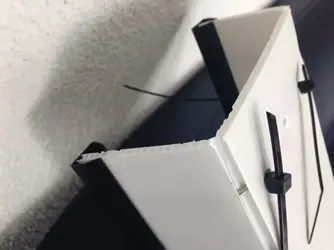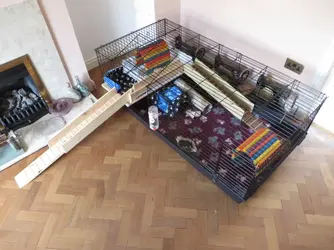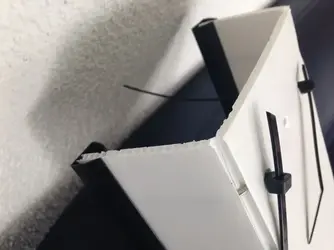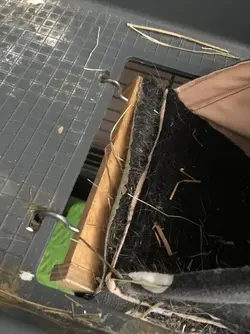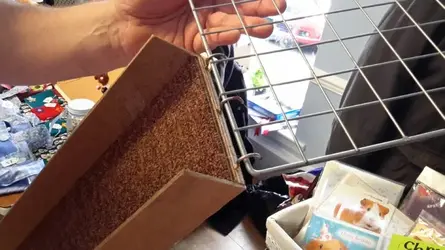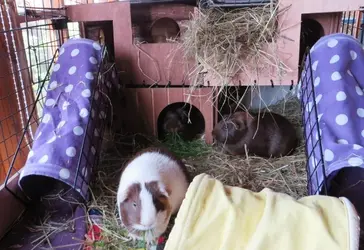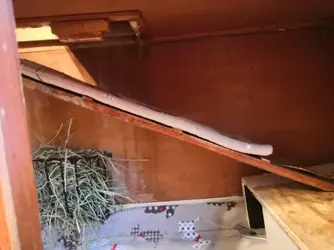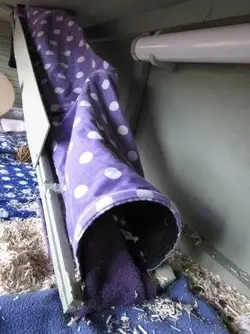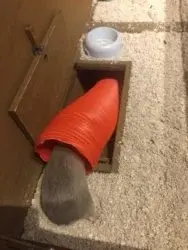- Joined
- Nov 10, 2009
- Messages
- 54,312
- Reaction score
- 39,383
- Points
- 3,350
1 Guinea pigs are not natural climbers
2 Aspects to consider
- Steepness
- Material
- Sides
3 Ramp types
- Wooden ramps
- Correx and guttering ramps
- Commercially available ramps
4 Reducing the steepness
5 Ramp tunnels
This thread has been made by @Veggies Galore I would like to thank her for her amazing work on this. @Kallasia made the original but due to photos unavailable we have to withdraw it sadly
1 Guinea pigs are not natural climbers
Adding a second storey to your pigs’ pen can be a great way to add some extra enrichment .
However, please bear in mind the following
2 Aspects to consider
Steepness
Guinea pigs don’t like steep ramps – they won’t go mountaineering up a ramp that is like a cliff face. Be wary of ready-made ramps that are “suitable for rabbits, guinea pigs, chinchillas, degus etc etc” because they are almost always far too steep for piggies.
As a general rule of thumb, for every 5cm up you need to go 16cm out.
So, for example, for a second storey that is 36cm (or one c&c grid) high, the ramp should be at least 120cm long.
Is your ramp adequately supported and fixed in place? If the ramp bounces up and down when the piggies are halfway up or down they will not feel stable and secure.
Some simple ways of making ramps less steep are discussed later in this thread.
Material
Piggies have very delicate feet. They should never be housed on rough surfaces or mesh/wire floors and the same goes for their ramps. If it’s painful for them to go up/down then they will not use it.
Consider using a fleece covering or a strip of carpet – so they can get grip and the surface is soft on their feet.
Sides
Adding sides and/or tunnels is a great way of making your ramp safer. There are several ways of doing this… which will be explained later in this thread .
Mobility
The final thing to consider is whether your piggies are fit and healthy enough to use a ramp. If they have mobility issues a second storey might just never work for them.
2 Aspects to consider
- Steepness
- Material
- Sides
3 Ramp types
- Wooden ramps
- Correx and guttering ramps
- Commercially available ramps
4 Reducing the steepness
5 Ramp tunnels
This thread has been made by @Veggies Galore I would like to thank her for her amazing work on this. @Kallasia made the original but due to photos unavailable we have to withdraw it sadly
1 Guinea pigs are not natural climbers
Adding a second storey to your pigs’ pen can be a great way to add some extra enrichment .
However, please bear in mind the following
- Guinea pigs are not naturally climbers - some will adapt to using a ramp if they feel safe – but others may never be happy using them.
- Adding a 2nd storey may increase space – but it does not increase floor size – in fact, the base of the ramp can take away from the amount of floor space available. Floor space that is important as this is where your guineas exercise. Please make sure your guineas still have the amount of floor space recommended in our cage size guide. Cage Size Guide
2 Aspects to consider
Steepness
Guinea pigs don’t like steep ramps – they won’t go mountaineering up a ramp that is like a cliff face. Be wary of ready-made ramps that are “suitable for rabbits, guinea pigs, chinchillas, degus etc etc” because they are almost always far too steep for piggies.
As a general rule of thumb, for every 5cm up you need to go 16cm out.
So, for example, for a second storey that is 36cm (or one c&c grid) high, the ramp should be at least 120cm long.
Is your ramp adequately supported and fixed in place? If the ramp bounces up and down when the piggies are halfway up or down they will not feel stable and secure.
Some simple ways of making ramps less steep are discussed later in this thread.
Material
Piggies have very delicate feet. They should never be housed on rough surfaces or mesh/wire floors and the same goes for their ramps. If it’s painful for them to go up/down then they will not use it.
Consider using a fleece covering or a strip of carpet – so they can get grip and the surface is soft on their feet.
Sides
Adding sides and/or tunnels is a great way of making your ramp safer. There are several ways of doing this… which will be explained later in this thread .
Mobility
The final thing to consider is whether your piggies are fit and healthy enough to use a ramp. If they have mobility issues a second storey might just never work for them.
Last edited:
